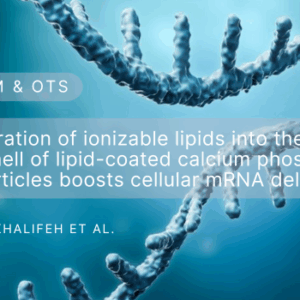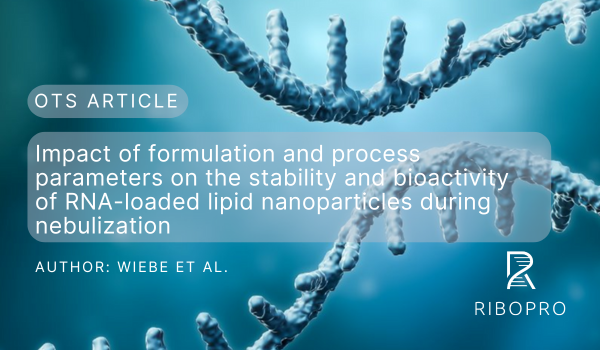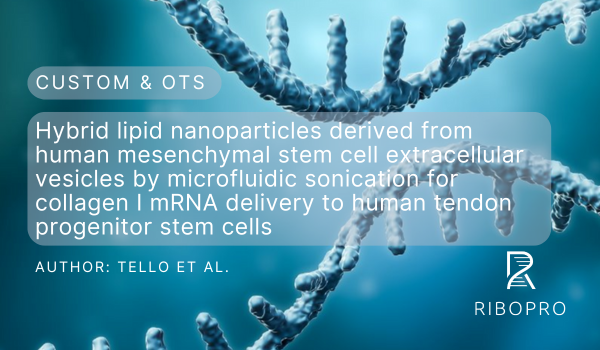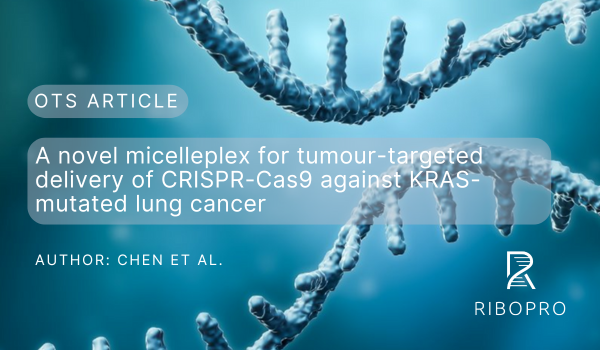Authors
Masoomeh Khalifeh, Rik Oude Egberink, Rona Roverts, Roland Brock
Keywords
Calcium phosphate nanoparticle, Endosomal escape, mRNA, Ionizable lipid, Nanomedicine,Lipid nanoparticles, mRNA, mRNA delivery, custom mRNA, OTS mRNA
DOI
https://doi.org/10.1016/j.ijpharm.2024.125109
Journal: International Journal of Pharmaceutics
PMID: 39708847
Abstract
Messenger RNA is a highly promising biotherapeutic modality with great potential in preventive and therapeutic vaccination, and in the modulation of cellular function through transient expression of therapeutic proteins. However, for cellular delivery, mRNA requires packaging into delivery vehicles that mediate uptake and also shield the mRNA against degradation. Lipid-coated calcium phosphate (LCP) nanoparticles encapsulate the mRNA in a calcium phosphate core, which is coated by a bilayer of structural lipids, positively charged lipids and pegylated lipid to mediate cellular uptake and achieve colloidal stabilization. Here, we show that such nanoparticles using positively charged lipids achieve cellular uptake but only poor cytosolic mRNA delivery. However, mRNA release could be greatly enhanced through incorporation of ionizable lipids into the outer leaflet of the lipid bilayer. We optimized the composition and molar ratios of ionizable lipids, positive lipid, cholesterol, and polyethylene glycol (PEG) and evaluated the potency of the formulations for the cellular delivery of mRNA. Whereas in lipid nanoparticles, the ionizable lipid has a main role in the complexation of the mRNA, our study provides a new paradigm for the employment of ionizable cationic lipids in nanocarriers other than lipid nanoparticles (LNPs) to boost the endosomal release of nucleic acids.



